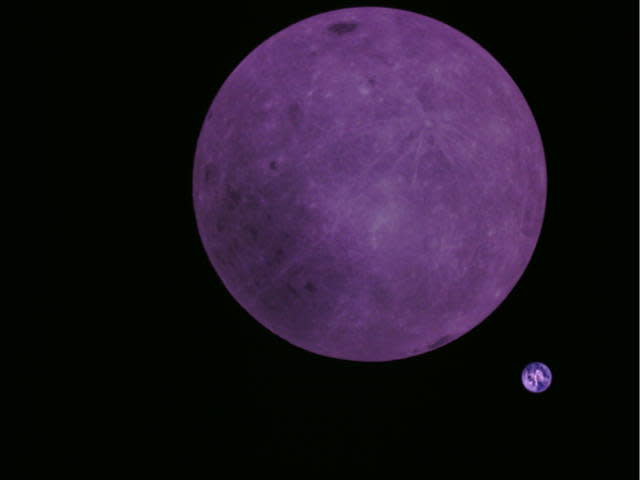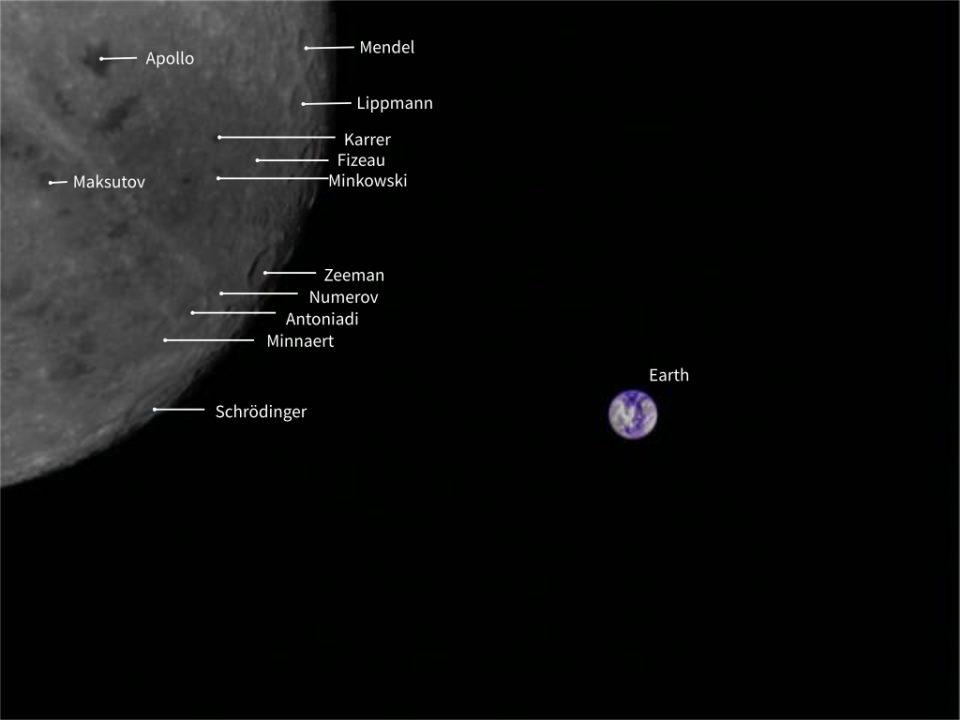Earth Plays 'Peekaboo' with the Moon in This Awesome Far Side Time-Lapse Video
A Chinese satellite orbiting Earth's moon has been snapping some amazing images from the lunar far side, otherwise known as the "dark side of the moon."
Longjiang-2, also known as DSLWP-B, is one of two microsatellites China launched to the moon last year to prepare for the arrival of its Chang'e 4 lander-rover combo mission, which touched down on the far side of the moon on Jan. 3. Its sister satellite, Longjiang-1, failed to achieve orbit, whereas Longjiang-2 has been successfully orbiting and observing the moon since May 2018.
A new photo captured by Longjiang-2 on Monday (Feb. 4) reveals the so-called "dark side of the moon" basking in sunlight as Earth photobombs the moon in the background. The term "dark side" is really a misnomer for the moon's far side — just because we can't see the far side from Earth, doesn't mean that the sun never shines there. Longjiang-2 captured this photo during the new moon, when the Earth-facing side of the moon was completely dark and the far side was entirely illuminated instead. [Watch the Longjiang-2 video of Earth from the Moon's Far Side!]

Longjiang-2 beams photos of the moon back to Earth via the Dwingeloo Radio Observatory in the Netherlands, where astronomers have volunteered to help China's space agency receive the images using the observatory's super-sensitive radio antenna.
Among other instruments, the microsatellite contains a tiny radio transmitter with a webcam the size of a smartphone camera, Tammo Jan Dijkema, an engineer with the Netherlands Institute for Radio Astronomy, explained in an interview with the Dutch news network RTV. The camera was built by students at the Harbin Institute of Technology in China.

The little webcam is limited to a resolution of 640x480 pixels, so the images are "not very clear," Dijkema told RTV, "but we're doing our best with the constraints that we have to take the most beautiful photos possible." (Dijkema's remarks have been translated from the Dutch language.)
Given the camera's the low resolution, Longjiang-2 has provided some impressively detailed images of the lunar surface. "The far side of the moon has many more visible craters than the side of the moon that we can see from Earth," Dijkema wrote in a blog post about the latest image.

You can see more photos from Longjiang-2 and learn more about the Dwingeloo telescope via the observatory's blog at camras.nl.
Email Hanneke Weitering at hweitering@space.com or follow her @hannekescience. Follow us on Twitter @Spacedotcom and on Facebook. Original article on Space.com.

